TV Station RNB
Calligraphy Girls – The path to the championship –
DC240527![]()
書道ガールズ ~高校日本一への軌跡~ [RNB]
![]()
![]()
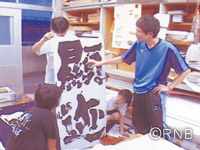
|Length : 25min. |Year : 2005 |
Teenage calligraphers energetically write out the lyrics of a Japanese pop song, using a 1-meter long brush on a huge 4-meter by 10-meter sheet of paper. This unique "calligraphy demonstration"is performed by Mishima High School calligraphy club members who won 1st prize in the 2003 National Calligraphy Competition. Calligraphy is not just a written form of communication but an ancient art reflecting the profound history and philosophy of the Orient. The girls' performance completely transforms the traditional perception of calligraphy, from a tranquil and reserved custom to a colorful and dynamic art from.
Sakura Sakura
DC231330![]()
さくらさくら [RNB]
![]()
![]()
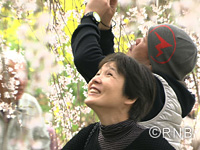
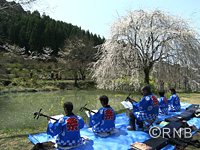
|Length : 48min. |Year : 2013 |
Aino is a village in the island of Shikoku, Japan. The only house remaining in this mountain village is of the Takezaki family, consisting of Grandpa Isamu (78), Grandma Ichiko (76) and their dog.
Spring time is here and the day the Takezakis have been waiting for all year has finally arrived. Today is the day when many visitors will come to view "Aino no Hana" (Flower of Aino), the weeping cherry tree that Grandpa Isamu planted in his youth.
The local people claim that no tree matches the beauty of this cherry tree.
The reason for this is because of its spherical dome-like shape and its beautiful reflection cast on the surrounding pond. But it's also because of the warm smile and hostility that Grandpa Isamu provides to all the visitors...
Visitors will take photos, compose a haiku, and even perform a concert of shamisen (a traditional Japanese string instrument) to embrace the beauty of the tree.
Just for one day of the year, Grandpa Isamu and Grandma Ichiko's house turns into an amusement park! It gets so crowded with visitors that a 75 year-old neighbor helps out to direct the traffic of cars outside. At night, Grandpa Isamu even lights up the tree so that the visitors can enjoy this special day until the very end.
Today is the day the cherry tree is in full bloom.
What will the special day be like this year?
This is the story of a beautiful weeping cherry tree and a couple that lives in an isolated corner of Japan.
Kumagaiso – A Tiny Miracle in a Tiny Village –
DC230224![]()
クマガイ草 小さな村の小さな奇跡の物語 [RNB]
![]()
![]()
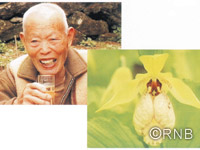
|Length : 55min. |Year : 2002 |
Besshiyama Village is the smallest village in Southern Japan with a population of only 270 people. Due to decreasing population, the once prosperous mining village will soon disappear as it merges with a city nearby. This story is about a flower named "Kumagaiso" which blooms for only 2 weeks in its lifetime and a 92-year former miner named Kiyoshi Kondo who has dedicated his life to the flower.
Shakespeare in the Valley – An Englishman Brings the Theater Home to Japan –
DC239718![]()
バントック先生と谷間の村の仲間たち [RNB]
![]()
![]()
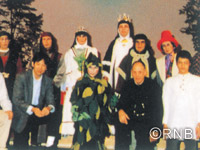
|Length : 26min. |Year : 1997 |
Theater breaks cultural barriers
When a diverse groupe of people from all walks of life join together to perform Shakespeare's "A Midsummer Night's Dream" in English, the results are anyone's guess. But that is exactly what the Hijikawa English Theatre Troupe in Ehime Prefecture, Shikoku, did to rave reviews. Founded in 1994 by English poet and playwright Gavin Bantock and his wife Kyoko, this troupe recently put on its second English-language performance.
The Day the Seto Inland Sea Becomes a Garbage Can
DC222223![]()
瀬戸内海がゴミ箱になる日 [RNB]
![]()
![]()
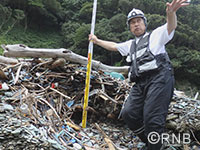
|Length : 48min |Year : 2022 |
The Seto Inland Sea is often described as a “calm, beautiful and abundant sea”. But there was a side to the Seto Inland Sea hidden from us.
“Convenient, durable and cheap”, and “Best invention of the 20th century”. That’s how plastic was described, and it became a necessary part of our daily life ever since the 1950’s. It's reported that 8.3 billion tons of plastic has been produced so far. Plastic takes more than 400 years to decompose, but it continues to be produced, and it is becoming a serious environmental issue.
Born and raised in Yawatahama City in Aichi prefecture, Mr. Koji Iwata (60) officially started the project of picking up marine debris in 2016. He investigated all along the Seto Inland Sea, to shed light on the situation regarding marine debris. So far, he has found over 500 locations littered with trash.
Mr. Iwata says, “By picking up plastic waste that has washed ashore by seasonal winds and currents, we can decrease the trash in the sea.”
But these locations cannot be accessed through land. It can only be accessed by boat. It’s not an exaggeration to say that this work puts one’s life on the line, because the mountain of plastic waste has created faults over the last few decades, and it’s become inhabited by vipers and centipedes. In addition to that, transporting the trash by boat is affected by fierce winds and currents.
Furthermore, each municipality is entrusted with their own methods of accepting and disposing of marine waste, so the response each time is conflicting. Even if he goes through the trouble of picking up trash, sometimes it’s not accepted for disposal.
A large-scale trash collection using boats. It is a project that almost no one has tackled before. This project will shed light on the reality of marine pollution, and the challenges the future holds.














